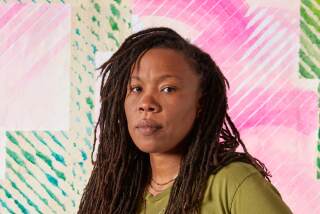BOOK REVIEW : Cassatt and Duncan: Tale of Two Legendary Artists : AFTER EGYPT Isadora Duncan and Mary Cassatt A Dual Biography<i> by Millicent Dillon</i> William Abrahams / Dutton $24.95, 403 pages
- Share via
Toward the end of the 19th Century, two American women, a Philadelphian and a Californian, left the United States and settled in Paris to pursue careers as artists. Despite sharing the events and circumstances of the Parisian fin de siecle , Mary Cassatt and Isadora Duncan, the painter and the dancer, the patrician conservative and the hedonistic rebel, would never meet face to face.
Cassatt, dedicated to her painting and to her family, had an expatriate experience completely different from the one the younger Duncan had, absorbed as she was with the theater and dance, her tempestuous love affairs and political experiments. At a time when society and art were undergoing rapid and profound transformations, a 30-year age difference would necessarily create an enormous experiential gap between these two lives.
One might, then, question why Millicent Dillon chose to write a dual biography about two figures separated by a generation of experience and change, particularly since they never met. In her introduction to “After Egypt,” Dillon states: “This book will attempt a telling of another kind. Awkwardly, one step forward and two steps back, it will go in pursuit of a different kind of knowing, to search for explanation that proves the limitation of explanation, to break sequence.”
This deconstructionist approach to biography is only partially successful because it is essentially awkward. Yet despite their differences, Cassatt and Duncan offer intriguing and contrasting perspectives on the creative process of the American woman artist abroad.
The key Dillon uses to draw these two artists together lies in the events alluded to in the title. “After Egypt” refers to trips undertaken by the two women in 1910 and 1911. That these trips should be a year apart is an intriguing coincidence, even if the assertion that the Egyptian voyages should be seminal to understanding these two lives and careers seems a bit contrived.
Cassatt’s only trip to Egypt takes place in 1911 at age 66. Duncan goes a year earlier at age 33 and again in 1912.
Their traveling companions reveal the sharp contrasts between these two lives: Cassatt travels in the company of her brother and his wife and children. On her first trip, Duncan, pregnant by her lover, Paris Singer, travels aboard his yacht, the Isis (named after her), along with him, her daughter Dierdre (by Gordon Craig), her brother Augustine and his daughter Temple. She returned with Singer and assorted company two years later (this second trip, incidentally, does not appear in Duncan’s autobiography, “My Life”).
Egypt represents an elusive mixture of awe, mystery and melancholia for these two women. For Cassatt in particular, its art is “overpowering; fancy going back to babies and women to paint.”
But this comment, which Cassatt included in a letter to her longtime friend Louisine Havemayor, came at a time in her life when commitments and responsibilities to family had become so rigidly set that she no longer could escape them. From this point on, she was troubled by both her brother’s and her own declining health. Egypt represented neither change nor freedom for Cassatt.
For Duncan, whose life seemed a continual manifestation of the search for the transcendental and mystical experiences that nourished her art, Egypt was a new source, but only one of many. It was one more adventure in the brief, headlong rush of a life that ended in 1927 with her haunting, untimely death.
Dillon successfully raises questions about the relationship between these artists’ work and the problems of their individual lives. What lies embedded, finally, in this tale of two lives are these artists’ views and feelings about matriarchy and the portrayal of women confined by and fighting against social constraints.
Next: Judith Freeman reviews “Doc-in-a-Box” by Robert A. Burton (Soho Press).
More to Read
Sign up for our Book Club newsletter
Get the latest news, events and more from the Los Angeles Times Book Club, and help us get L.A. reading and talking.
You may occasionally receive promotional content from the Los Angeles Times.










